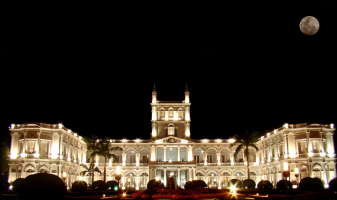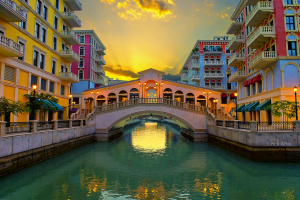Top 12 Best Places to Visit in Eastern Europe
Eastern Europe appears to be the wonderful place to visit in the coming years, and there is always a new reason to visit this region. You can enjoy amazing ... read more...cultures at a low cost, allowing you to experience more for less money. Along the way, you'll come across unique cuisines, traditions, and landscapes, as well as modern influences. One of the best things about Eastern Europeans is that they tend to keep in touch with their history rather than erasing it in the name of a modern lifestyle. As a result, you will have the opportunity to visit sites that are hundreds of years old! Let's take a look at the list of best places to visit in Eastern Europe that Toplist offers you.
-
Prague, a prosperous and bustling city, now attracts more tourists than ever before. However, its picturesque downtown conceals a dark legacy as well as a resilient past. Prague has survived numerous overthrows, invasions, fires, and floods since around A.D. 870. The Czech capital's fascination stems from its reputation for survival and perseverance. Its storied churches, narrow streets, intimidating hilltop castle, and statue-lined bridges now set the scene for an urban fairy tale. Even the most jaded traveler would find it difficult to resist the allure of this city.
Prague used to be a hidden gem, overshadowed by its flashier western neighbors. But the city couldn't keep its wonders hidden for long, and it's now a haven for travelers looking for awe-inspiring experiences at reasonable prices. Even today, top attractions such as the famous Charles Bridge and the historic Prague Castle are free to enter, and many hotels offer rooms at a fraction of the price of other European cities. But this bargain-hunting legacy has a ticking clock on it, so if you're hoping to find a fire-sale price, now's the time to do so.
Prague has been dubbed the "city of a thousand spires" for good reason: as you gaze over its 1,100-year-old skyline, you'll be rewarded with magnificent views of lovely domed churches and soaring old towers that combine to make Prague one of the world's architectural gems. Fine examples of Gothic, Baroque, Renaissance, and Art Nouveau styles can be found throughout the city, providing a striking contrast to the sturdy old Prague Castle.
Rankings:
- #1 in Best Christmas Vacations
- #1 in Best Places to Visit in Eastern Europe
- #2 in Best Cheap European Vacations
- #3 in Best Family Vacations in Europe
- #5 in Best Places to Visit in September
- #6 in Best Winter Vacations in Europe
- #7 in Best Places to Visit in Europe
- #7 in Best Cheap European Honeymoon Destinations
- #10 in Best Places to Visit in December
- #10 in Best Honeymoon Destinations in Europe
Location: Czech Republic

klook.com 
agoda.com -
Many people consider Budapest, Hungary's capital, to be the "Paris of the East." This lovely city is not only one of the most culturally significant in Eastern Europe, but it also has a number of UNESCO World Heritage Sites.
Budapest is more than just Hungary's political capital; it is also the country's commercial and cultural center. Culture pervades almost every inch of the Pearl of the Danube, from its diverse restaurant scene to its rich Jewish heritage. Budapest, divided by the Danube River and divided into three major districts - Pest, Buda, and Buda - combines modern conveniences with ancient architecture and grassy parks.
Straddling the River Danube, Budapest is famous for its thermal springs, some of which have been used for therapeutic purposes since prehistory. In fact, Budapest has so many things to do that you'll want to spend at least a few days exploring this dynamic city. Popular attractions range from impressive architecture and poignant reminders of 20th-century history to its vibrant cultural and entertainment scene, with everything from street buskers to classical concerts in beautiful churches.
Budapest is also a shopper's paradise, from the traditional wares and foodstuffs available at the grand old Central Market Hall to Vaci Street, noted for its mix of luxury boutique stores and big brand names. Whether you're searching for cuisine, shopping or museums, a multitude of all await you in Budapest. And prices are fair enough that you won't have to choose – you can indulge in them all.
Rankings:
- #2 in Best Places to Visit in Eastern Europe
- #4 in Best Winter Vacations in Europe
- #6 in Best Cheap European Vacations
- #15 in Best Cheap European Honeymoon Destinations
- #18 in Best Places to Visit in Europe
Location: Hungary
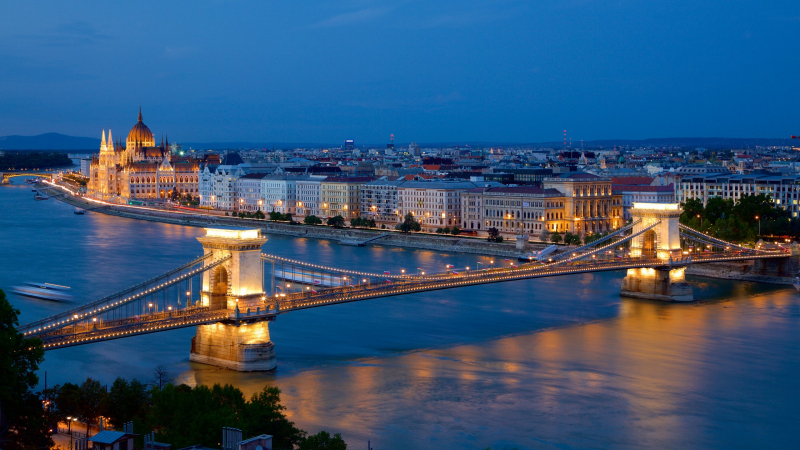
golfnet.vn 
booking.com -
Split, located on Croatia's beautiful Dalmatian Coast, is the country's second-largest city and a vibrant place that perfectly combines modern and ancient. It is also one of the Croatian cities that has served as a backdrop for Game of Thrones, and fans of the hit show can take an organized tour to learn more about their favorite scenes.
The city has been continuously inhabited for thousands of years, beginning with the Romans and continuing with the Byzantines, Croats, Venetians, and, finally, the Austrians, who left in 1918. As a result of these diverse influences, there are numerous historical activities to enjoy in the city's beautifully preserved Old Town.
Split is also famous as the home of the UNESCO World Heritage-listed Palace of Diocletian, one of the most impressive remaining Roman monuments anywhere in the world. It's also where you'll find the first-rate Archeological Museum, as well as what many consider to be Croatia's best art museum, the Ivan Mestrovic Gallery.
Just east of its pretty waterfront promenade is Split's main tourist center. Here, visitors will find some of the top restaurants, entertainment venues, and hotels in Croatia. There are also a number of wonderful day trips available from Split that take you to other nearby parts of this lovely country. These include visiting the ancient city of Salona and taking in the beautiful beaches of Zlatni Rat, Brela, the Pakleni Islands, Solta, and Milna.
Rankings:
- #3 in Best Places to Visit in Eastern Europe
- #4 in Best Beaches in Croatia
- #18 in Best Cheap European Vacations
Location: Croatia

thediscoveriesof.com 
standard.co.uk -
Tallinn is the capital city of Estonia and a perfect holiday destination if you want to combine the comforts of modern world, versatile nightlife and luxurious adventures with rich cultural scene in the local historical setting. With surprises around every corner, Tallinn bursts with charm like no other European city. The capital of Estonia is steeped in history, yet has all the modern offerings tourists expect from a destination in the 21st century.
The city is exceptionally photogenic, especially during the midnight sunsets in the summer. And if you want to see the city at its very best, plan your visit during the Estonian Song Festival. It brings together 30,000 of the best singers in Estonia onto one stage every five years to create music that vibrates throughout the city. The next festival is scheduled for July 3-6, 2025.
Tallinn's Old Town has managed to preserve its medieval heritage throughout centuries of domination by foreign rulers, rightfully earning a UNESCO World Heritage Site designation. You can still strut through the ivy-covered Viru Gate, explore the gothic Town Hall, and walk along the town walls like others have done for hundreds of years. Other can't-miss sights include the lower Old Town area and Lahemaa National Park.
But you should spend equal time exploring Tallinn's modern-day offerings, as well. The city boasts Scandinavian-inspired restaurants, viewing platforms, and lush parks. Before leaving, make sure you try some of the delicious chocolates made by Kalev, the largest and oldest confectionery in Estonia.
Rankings:
- #4 in Best Places to Visit in Eastern Europe
Location: Estonia

roughguides.com 
smartcitiesworld.net -
Bucharest, one of the best places to visit in Eastern Europe, is the capital of Romania and its largest city with a population of more than 2 million. The city is one of the main attraction points of Eastern Europe in terms of culture, entertainment, commerce and tourism. Its location promises a good mixture of various cultures. The city is located 80 kilometers north of Bulgaria and also neighbors to both Serbia and Ukraine.
The confluence of architecture in Bucharest is dizzying yet fascinating. Its Byzantine buildings; 16th, 17th, and 18th-century churches; Art Nouveau mansions; and spectacular Neoclassical facades have survived earthquakes, war, and later, communism, combining to create a breathtaking urban display. During that dark political era, somber block panel masonry left its imprint, as well as the gargantuan Palace of the Parliament, the prized creation of dictator Nicolae Ceausescu.
The charm of Bucharest is revealed by exploring its sprawling city parks, admiring the works of art and exhibits at its excellent museums, and getting lost in the gritty yet charming lanes that weave through the Old Town. A stroll down Calea Victoriei, arguably one of the city's most beautiful streets, is an encounter with the country's grandest buildings and most meaningful monuments, all of which bear witness to a bygone era.
Many of Bucharest's tourist attractions, such as the Palace of Parliament, which has 1,100 rooms and is billed as the world's second-largest administrative building, provide insight into the city's communist history. To learn about the history of the Romanian people, go to the Romanian Peasant Museum and the open-air Village Museum. Then, stroll through Bucharest's charming Old Town and sample the city's impressive gastronomic offerings, which include a mix of traditional hearty dishes and modern international staples.
Rankings:
- #5 in Best Places to Visit in Eastern Europe
Location: Romania

hotelscombined.com 
-
Since 1979, Dubrovnik has been a UNESCO World Heritage Site. It is surrounded by beautiful medieval ramparts that have been preserved in their original form and are one of the city's main attractions. Visitors from all over the world come to experience the rich history preserved in the monuments and buildings, to sample the fantastic local cuisine, to go on a few fun day trips, and to relax in the warm waters that spill onto pebble beaches.
The beautiful city of Dubrovnik, known as the "Pearl of the Adriatic," offers a wealth of intriguing attractions for you to explore. Dubrovnik was founded in the seventh century and has been ruled by the Venetians and the Hungarians over the centuries, each of whom has left their mark. The city grew most rapidly in the 15th and 16th centuries, as evidenced by its impressive architecture and designation as a UNESCO World Heritage Site.
Dubrovnik is known for its spectacular seafront location on the Dalmatian Coast, as well as its evocative and historic Old Town district. It is home to Croatia's artistic and intellectual elite, and it hosts a variety of cultural activities and festivals.
Walking around its picturesque old streets and alleys while visiting such excellent attractions as its splendid cathedral and treasury, the broad Stradun pedestrian walkway, and its many fine old palaces and fortifications are highlights of a visit. A walk around the ancient city walls is one of the highlights of any visit.
Rankings:
- #5 in Best Beaches in Croatia
- #6 in Best Places to Visit in Eastern Europe
- #9 in Best Destination Wedding Spots in Europe
Location: Croatia

lonelyplanet.com 
bestdayeveryday.com -
For Hungarians of all ages, Lake Balaton evokes vivid memories. Travel options were limited during the communist era, so this large lake in western Hungary was a popular annual vacation destination. German families and friends separated by the Berlin Wall vacationed here as well, giving the area a distinct German flavor that still exists today.
Travel habits have changed, but Balaton has not become stuck in time. It attracts a large number of water sports enthusiasts and sunbathers who come to wakeboard, kitesurf, or paddleboard. Beyond the water, Balaton is becoming an impressive destination for music and the arts, as well as possibly Hungary's most exciting gourmet region outside of Budapest.
The shimmering, nearly 50-mile-long lake offers aquatic delights for all comers. Shallow depths on Balaton’s southern end make it an ideal spot for family vacations, while the annual 3.2-mile swim across the lake, with a course from Révfülöp on the north side to Balatonboglár on the south, attracts Olympians. Others come to watch the Blue Ribbon Grand Prix sailing regatta, going strong since 1936. More than 500 boats compete in the 96-mile race as spectators enthusiastically cheer them on.
The hilly area surrounding Lake Balaton, which generates several different microclimates, holds some of Hungary’s prime vineyards. On the northern side, Badacsony and Somló are particularly distinct regions with volcanic soil that creates stony full-bodied white wines. Especially worth seeking out are the wines in Somló made with local grapes like Furmint, Hárslevelű, and Juhfark. Badacsony and Balatonfüred produce delicious Pinot Gris, Olaszrizling, and a unique hyper-local variety called Kéknyelű.
Rankings:
- #7 in Best Places to Visit in Eastern Europe
Location: Hungary

franks-travelbox.com 
budaventura.com -
Montenegro is less than 3,400,000 acres, but what this destination lacks in size it more than makes up for in charm. Only established as an independent nation in 2006, the small but mighty country of Montenegro is fast becoming one of Europe's tourism hot spots. It's packed with things to do and beautiful places to visit.
Medieval towns, magnificent mountains, breathtaking beaches and charismatic locals await you in this Balkan country. Wander past the stone churches and romantic squares in Kotor, or view some of Montenegro's natural wonders, such as the startlingly blue Mediterranean waters surrounding Sveti Stefan and Tara Canyon, the second-deepest canyon in the world.
Home to picture-book-perfect historic towns; enticing beaches backed by the warm, clear waters of the Adriatic Sea; craggy peaks; and a mild Mediterranean climate, this tiny country in what was once Yugoslavia packs a big punch. Best of all, Montenegro, which uses the Euro, is refreshingly affordable, with a beach vacation here costing you a fraction of what you'd pay in France, Italy, or neighboring Croatia.
From the impressive Venetian Old Town in Kotor, backed by a spectacular deep blue, fjord-like bay, to the mountainous interior, filled with national parks and towering peaks and underground caverns like Lipa Cave, Montenegro is full of attractions.
Rankings:
- #8 in Best Places to Visit in Eastern Europe
Location: Eastern Europe

porticoandbridge.com 
dautudinhcu.com -
A true fishing port, as well as a popular summer retreat, Rovinj is located on the western coast of the Istria peninsula in the Adriatic Sea. It is one of the most attractive and developed tourist destinations in Croatia. Its Old Town was built on an island that was connected to the mainland only in the 18th century and surrounded by as many as 22 small islands where a mild Mediterranean climate prevails.
Symbolized by one of the most picturesque and romantic cities in the entire Mediterranean, Rovinj attracts visitors from all over the world who return to it faithfully. Rovinj manages in a very unusual way, almost with ease, to combine rich tradition and historical features with modern times. Being an active fishing port, you will experience the atmosphere of a small fishing village, especially during popular fishing festivities or in one of the traditional taverns called Spacio.
On the other hand, the city has developed excellent gastronomy over the years and offers a high standard of tourist services in general. With Rovinj's small size and big appeal, it can get crowded during peak travel season in late spring and summer, so you'll want to finalize your vacation plans at least a few months in advance.
Rankings:
- #9 in Best Places to Visit in Eastern Europe
Location: Croatia

trip.com 
rovinj-tourism.com -
Vilnius has many faces – its labyrinthine Old Town, its sleek business district, its elegant centre, its many open squares and parks, and its historic suburbs – all of which blend together into a seamless complete city. The city’s charm is in its harmonious sense of unity – it just feels right whichever way you look at it.
The historical centre of Vilnius, is one of the largest old town centres in Eastern Europe covering almost 360 hectares. The Old Town is situated in a picturesque valley of Vilnia and Neris rivers, at the crossroads of trade roads, next to the fort, which was guarded by Vilnius castle in the past. The Old Town offers an interesting mix of the old and the new, with cobblestone streets that lead to boutiques and trendy restaurants.
This Lithuanian city wows with its Baroque architecture, but it doesn't stay stuck in the past. Vilnius offers different museums of art, nature, architecture, history, science, theatre, music and cinema, literature, as well as memorial museums. Those who love impressive sights should visit Gediminas’ Castle or the Campanile of St. John‘s and enjoy an impressive panorama of Vilnius. The Gates of Dawn is famed for a painting, which is said to have miracle-working powers and the apparition of the Virgin Mary. For panoramic city vistas, you can take a ride to the revolving observation platform at the top of the Vilnius Television Tower.
Rankings:
- #10 in Best Places to Visit in Eastern Europe
Location: Lithuania
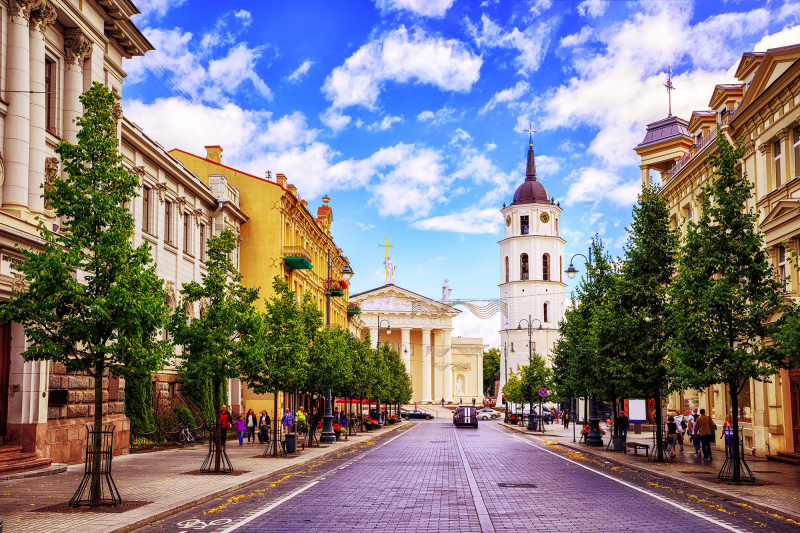
thecrazytourist.com 
viamichelin.com -
Ljubljana, one of the best places to visit in Eastern Europe, is a city for curious and adventurous souls. The city is a treasure trove of exciting secrets and natural joys. The proud green capital of Slovenia invites all vagabonds who are hungry for culture, art, entertainment, and large green areas, which provide a relaxed atmosphere. The conglomerate of colourful history and natural heritage adorns the great heart of Ljubljana. Your First visit will not be your last. Ljubljana’s authentic charm is most enjoyed by those travellers who keep coming back for the wonderful culture, cuisine and varied city life.
The strength of the former Roman Emona lies in its openness and character. Ljubljana has not forgotten to evolve and follow global sustainable trends but has still retained the charm and spark for those who love the historical city centre so much.
Every walk down the cobblestone streets brings forth a new inspiring story. Climb to the castle, cross many beautiful bridges, and stop at Prešeren Square, with the lovely Franciscan Church. You can also visit the town hall, the cathedral, and some fascinating galleries and museums in the immediate vicinity. The greatest Slovenian architect Jože Plečnik is the master responsible for the city's modern image you know today. A selection of his works was included in UNESCO's World Heritage List in 2021.
Rankings:
- #11 in Best Places to Visit in Eastern Europe
Location: Slovenia

planetofhotels.com 
theguardian.com -
Minsk is the Belarus capital without fuss and noise, a metropolis with a bizarre interweaving of medieval baroque and Soviet monumental buildings. The ancient city, which always remains young, attracts tourists with its ancient architecture and impressive buildings of modern construction, classical theaters, and creative art hubs. Amazing discoveries here await not only connoisseurs of antiquity, but also lovers of modern architectural trends.
While the destination's architecture may not be as grand as other cities in Eastern Europe, Minsk offers a more contemporary take on Eastern Europe. This Belarusian city is packed with chic eateries, lively nightclubs and modern art galleries. Plus, tree-filled Gorky Park, the oldest park in the city, offers fun for all ages thanks to its rides, ice skating rink and planetarium. For a look into Minsk's past, visit Independence Square, where you'll find the former KGB headquarters, the Lenin Monument and the neo-Romanesque Church of Saints Simon and Helena.
The climate in the capital of Belarus is moderately continental. Winters are mild, with temperatures rarely falling below -10 ºC. Summers are not hot, with an average temperature of +16 ºC to +18 ºC. Tourists will feel comfortable in the city at any time of the year. If you want to get acquainted with the Slavic folk traditions, you should visit Minsk in the middle of June. At this time, there is the International Folklore Festival Svyata sun. Kupala bonfires, concerts, and acquaintance with ancient rituals await the guests.
Rankings:
- #12 in Best Places to Visit in Eastern Europe
Location: Belarus
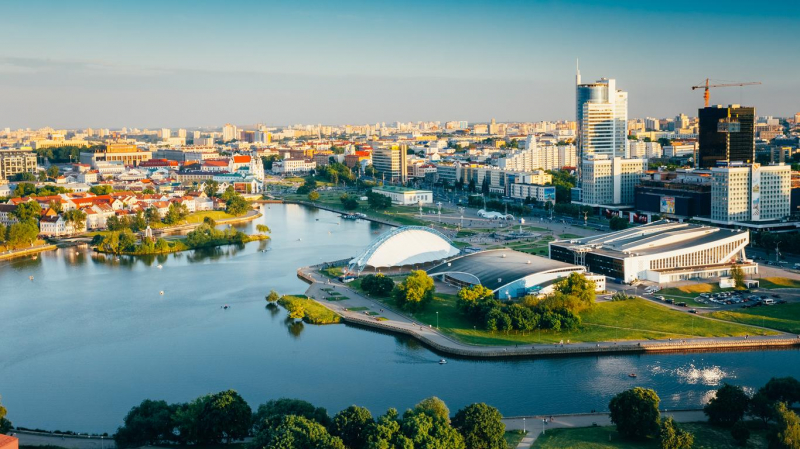
terrifica.com 
freepik.com





















